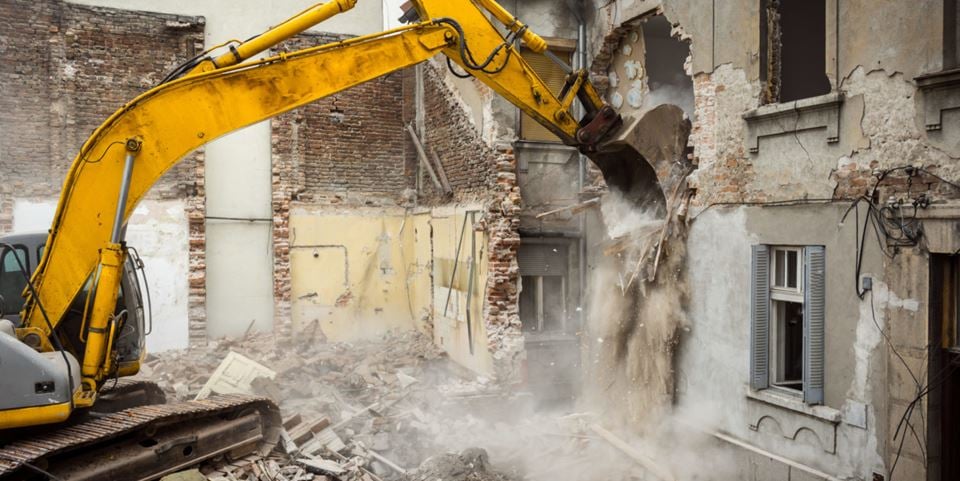Engelsen is a Chief Research Scientist looking into making concrete more sustainable, and buildings more eco-friendly. He is currently coordinating research projects focusing on recycled construction aggregates.
In the building sector, the term ‘construction aggregates’ refers to the sand, gravel and crushed rock that we mix together to make concrete and asphalt. These aggregates make up about two-thirds of the volume of concretes. In other words, the cement and water that we also mix in forms a relatively small proportion of finished concrete, although it is this fraction that enables the concrete to harden, giving us the basis for robust and resilient buildings.
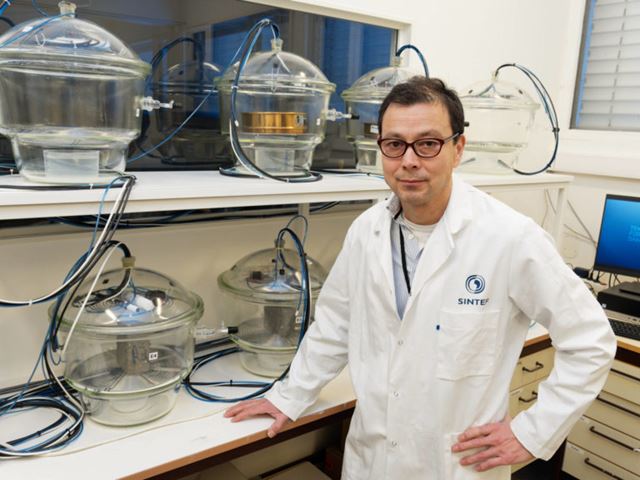
SINTEF researcher Christian John Engelsen conducts research into concrete, both in his laboratory in Oslo and in connection with newly laid floors in Mumbai in India. Photo: Georg Mathisen
Crushed and sorted
“In Norway, we started looking into this at the end of the 1990s with the idea of recycling bricks and concrete”, says Engelsen.
“When you demolish a building made of bricks or concrete, you crush the demolition waste and sort the rock from the sand in order to reuse the materials to make new concrete. These recycled construction aggregates all have potential applications where you might otherwise use natural raw materials. Such an approach could be more widely applied than it is today”, he insists. Engelsen is referring to road construction and new buildings.
A trend is now developing towards the more commercial application of these recycled materials. The problem is that they are physically very heavy, and access is widely dispersed. For this reason, you want to organise a construction project so that the recycled aggregates can be crushed on site, but then it may be difficult to establish to what extent they are for purpose.
The alternative involves long distance and environmentally damaging transport or the use of centralised facilities that can recycle mixed and contaminated demolition waste.
“Here it is also possible to achieve stable production even if the quality of the construction aggregates that we want to recycle is variable”, says Engelsen.
RECONC
RECONC is the name of a research project focusing on recycled construction aggregates derived from concrete slurries with CO2-binding properties and manufactured using the Re-Con Zero EVO dry wash technology.
The aim of the project is to develop aggregates from concrete slurries that meet the same technical specifications as natural aggregates, but with a demonstrably lower carbon footprint and minimal leaching of heavy metals.
Mapei Norge is acting as project coordinator, while SINTEF is assuming joint responsibility for research and development together with the University of Agder and the Norwegian Institute for Sustainability Research (NORSUS).
The other project partners are concrete contractors Ølen Betong and Velde Betong, cement manufacturers Norcem and Schwenk Norge, and Agder County Administration.
The project is being funded by the Research Council of Norway as an Innovation for Business (IPN) project.
Concrete slurry
“It isn’t only the aggregate component that can be recycled”, explains Engelsen. “We’re also looking into how we can exploit the old cement paste contained in demolition waste. We can separate this out and use it as a bonding agent in new concrete. Exploitation of the fine fraction in crushed concrete is the latest trend in our field of research”, he says.
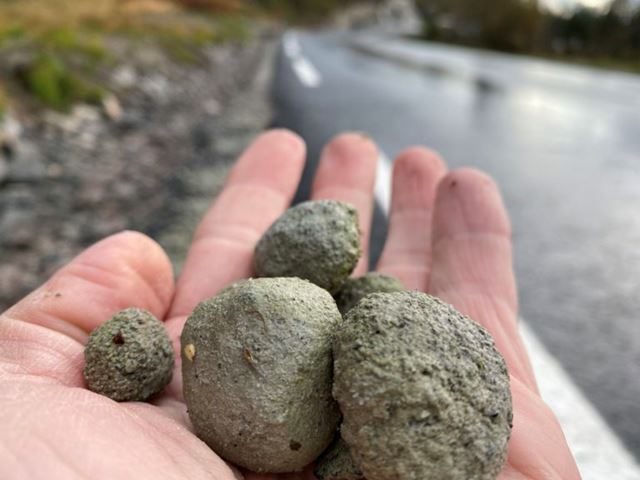
This is recycled concrete slurry that is now being used in road construction. Photo: Christian John Engelsen
Commercial European companies are also looking into these recycled fine-fraction cement replacements. In Norway, research is also being carried out into how concrete slurries derived from the dry washing of truck mixers can be recycled as useful aggregates. This has the potential to reduce the volume of slurry waste sent to landfill, and the consumption of washing water by between 80 and 90 per cent.
“The potential for recycling all the components in old concrete certainly exists, but nothing is being done about this at present. Three things have to be in place before this can happen”, says Engelsen.
“The first is to establish reliable levels of quality, which then have to be documented”, he explains. “The second is accessibility. The construction sector must have access to recycled aggregates when and where it needs them. The third is cost-effectiveness”, says Engelsen.
Trials in India
As part of a joint Indian-Norwegian research project, Engelsen is currently in the process of teaching the Indian construction sector how to recycle its concrete. Naturally enough, in a country that is ten times the size of Norway, and with 250 times the population, the need and the opportunities are much greater.
“It’s potentially possible to recycle everything, but it takes a while to get everyone in the right mindset”, argues Engelsen.
In his laboratory in Oslo, Engelsen keeps glass jars, each containing its own block of concrete made of a different recycled aggregate. He uses these to find out how much CO2 the various aggregate mixtures can absorb.
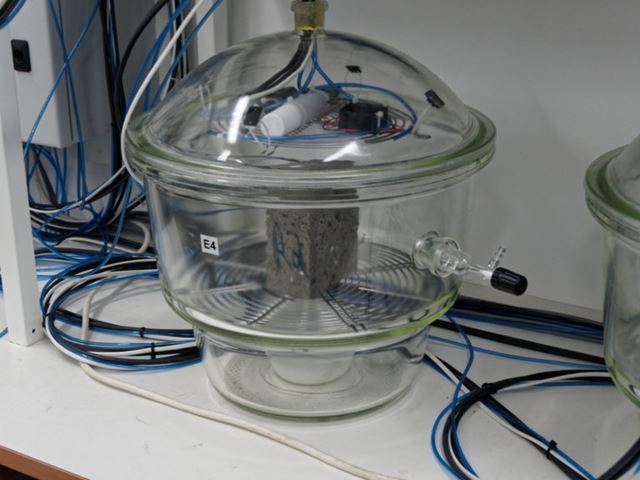
In his laboratory, Engelsen keeps concrete blocks from India, together with crushed concrete and recycled concrete slurry. This experiment is being carried to find out how much CO2 a concrete block can absorb. Photo: Georg Mathisen
Concrete, of course, contributes to greenhouse gas emissions, and manufacture of the cement binding agent makes the greatest contribution. However, concrete buildings also absorb CO2 during their lifetimes, and researchers are working to find out how the absorption process can be optimised.
Indian-Norwegian collaboration
SINTEF is currently working with the Indian Ministry of Housing and Urban Affairs to boost the recycling capacity of heavy building and construction waste in India.
The project is being funded by the Norwegian Embassy in New Delhi and will continue up to and including 2026.
SINTEF is providing assistance in connection with processes such as the implementation of regulations and documentation, applied research and the practical performance of demonstration projects.
Transport and natural resources
“The recycling and reuse of demolition waste can help a great deal towards reducing transport to landfill sites that are usually located at some distance from the towns and cities”, says Engelsen. “This enables us not only to reduce the over-extraction of natural resources, but also to limit the danger of demolition waste being dumped only to become a source of pollution”, he says.
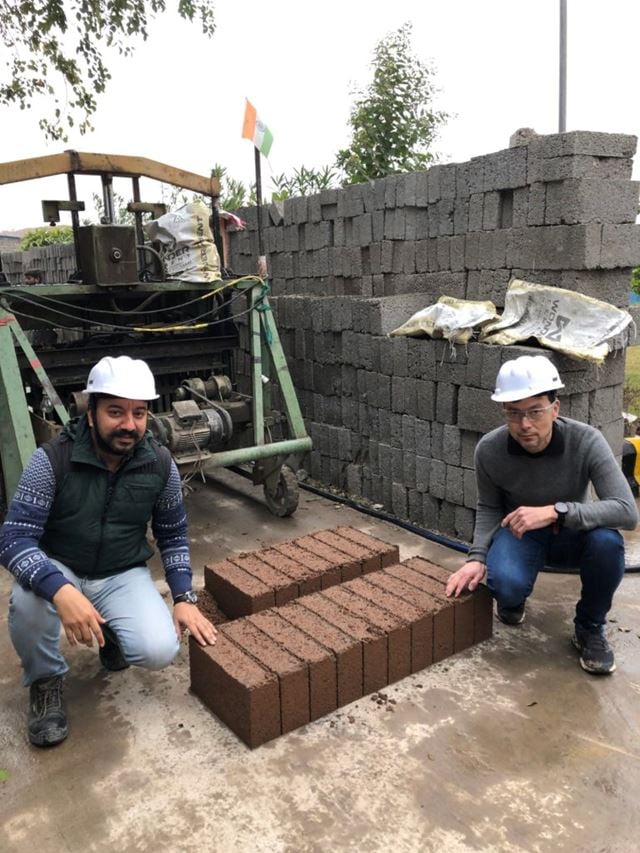
Sandeep Malhotra (from Indo Enviro Integrated Solutions Limited) and SINTEF’s Christian J. Engelsen demonstrating the results of the trial production of concrete blocks containing a new type of recycled aggregate made in Goa. Photo: SINTEF
“This is a crucial initiative in Norway, but in a country such as India, where many hundreds of millions of tonnes of demolition waste are generated every year, it’s even more important to have a sustainable pollution prevention strategy in place”, says Engelsen.
